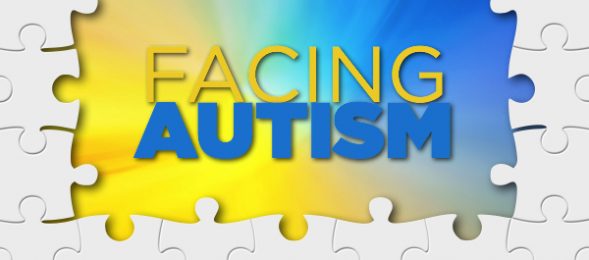Have you ever seen a group of children playing tag on the playground and noticed one child repeatedly going down the slide? He probably wanted to play with the other children but he did not know how. If this sounds familiar, you may have just seen a child who is on the autism spectrum. Autism has been called an invisible disability and it is. When you look at my son, you will not be able to tell that he has a developmental disability.
I want to emphasize that autism is a spectrum disorder and therefore the way it manifests in each individual can vary. So how can you explain autism to your child? You can tell your child that autism affects the way the brain works. Your child’s brain tells him or her how to behave, communicate, follow directions, and make friends. However children with autism may not be getting these messages and if they get them, they may be coming through in a different way.
Some children with autism may not speak at all and some may make strange sounds. This is their way of expressing how they feel. Some may need to use a communication device like an iPad to help them communicate. So when your child asks a child with autism to play, they may not answer. This does not mean that they can not hear or that they do not want to play. They can hear but they may not understand or be able to answer.
You can tell your child that some children with autism need to know what is going to happen and when it is going to happen. Change can be scary. Some children with autism may flap their hands or spin around and others may be very quiet and keep to themselves. Some of them may want to play, but will need your child to initiate.
There are some children with autism who may say and do the same things over and over. They may line up or stack their toys and some may do what we call scripting. This means they may repeat lines from something they heard, such as from a television show.
Help your child understand that some children with autism may experience their five senses differently. Some children may need noise-reduction headphones because everyday noises may hurt their ears. Some of them may not understand when someone is feeling happy or sad because facial expressions may be hard to read. Some children on the autism spectrum, including my son, respond well to pictures to help them understand the world around them.
Our kids experience the same emotions but they may express them in different ways and with varying intensities. When some children with autism are upset, they may scream and yell and it may take a long time to calm them down. When they are happy, some of them may flap around and make noises. They may have a hard time controlling how they express themselves.
Here is a great list from the Autism Society highlighting how your child can be a friend to someone on the autism spectrum:
- Accept your friend’s differences.
- Know that some kids with autism are really smart, just in a different way.
- Protect your friend from things that bother him or her.
- Talk in small sentences with simple words and use simple gestures like pointing.
- Use pictures or write down what you want to say to help your friend understand.
- Join your friend in activities that interest him or her.
- Be patient – understand that your friend doesn’t mean to bother you or others.
- Wait – give him or her extra time to answer your question or complete an activity. Invite your friend to play with you and to join you in group activities. Teach your friend how to play by showing them what they can do in an activity or game.
- Sit near your friend whenever you can, and help him or her do things if they want you to.
- Never be afraid to ask your teacher questions about your classmates with autism.
- Help other kids learn about autism
BMWK: What tips can you share to help parents teach their children how to interact with children on the autism spectrum?
